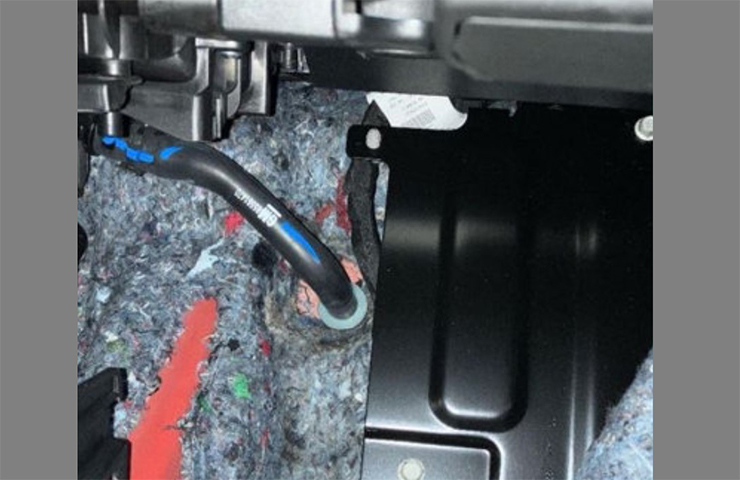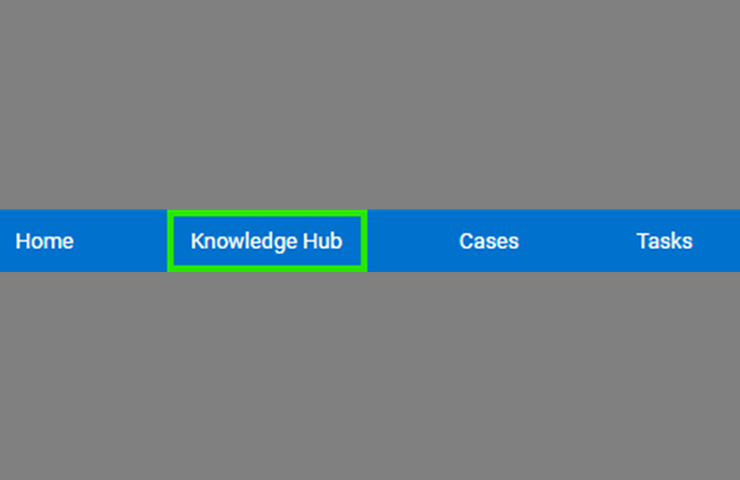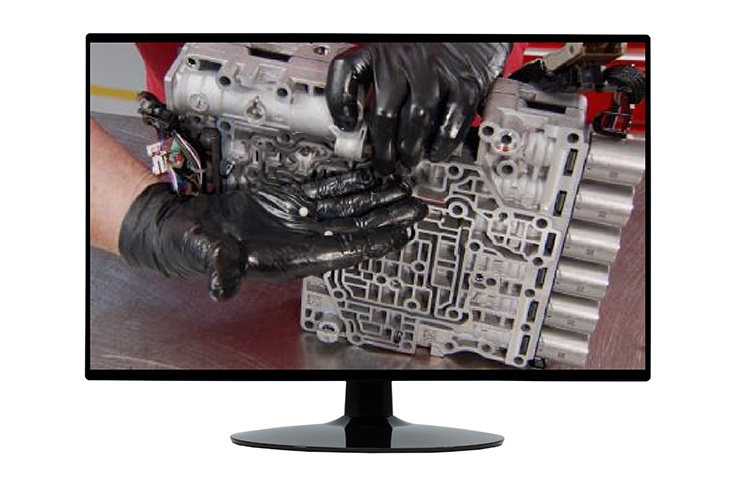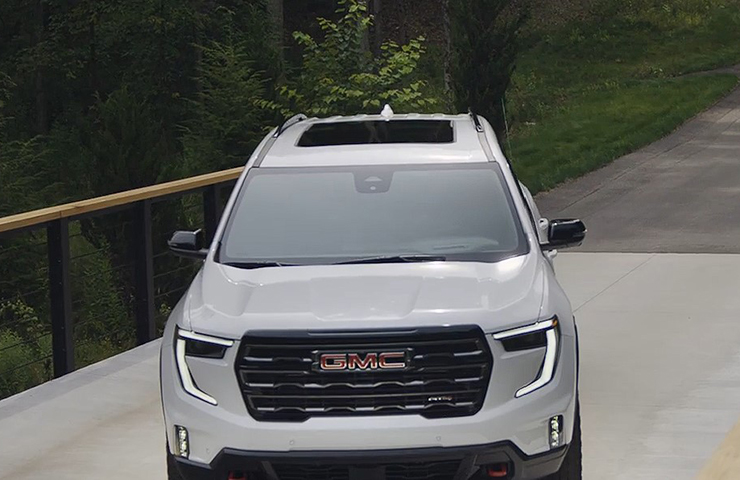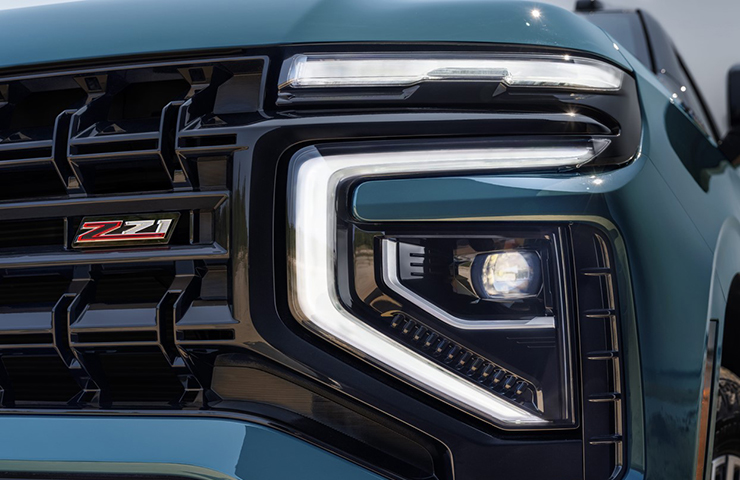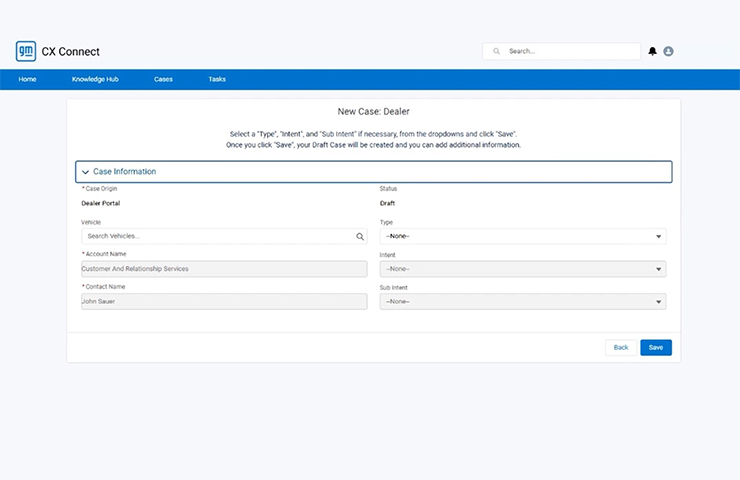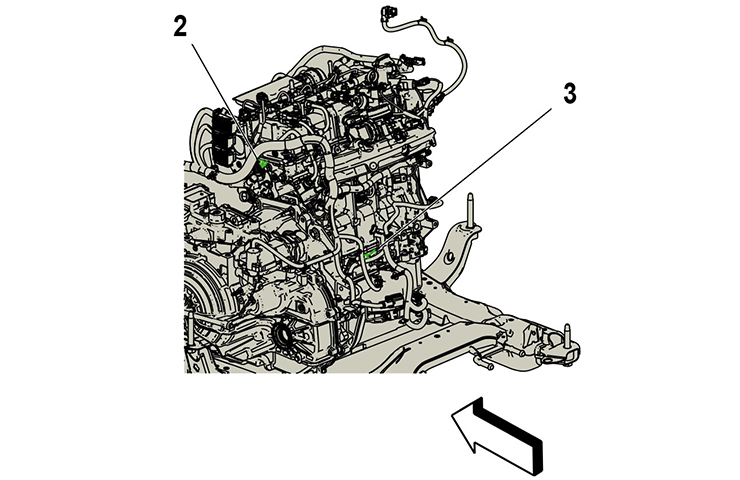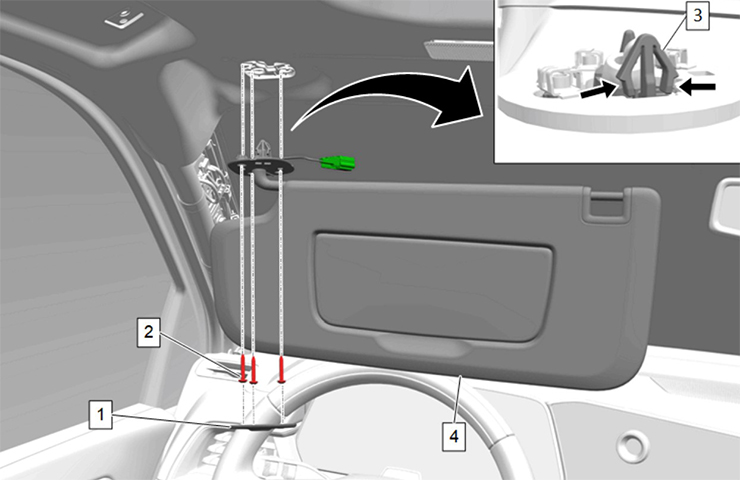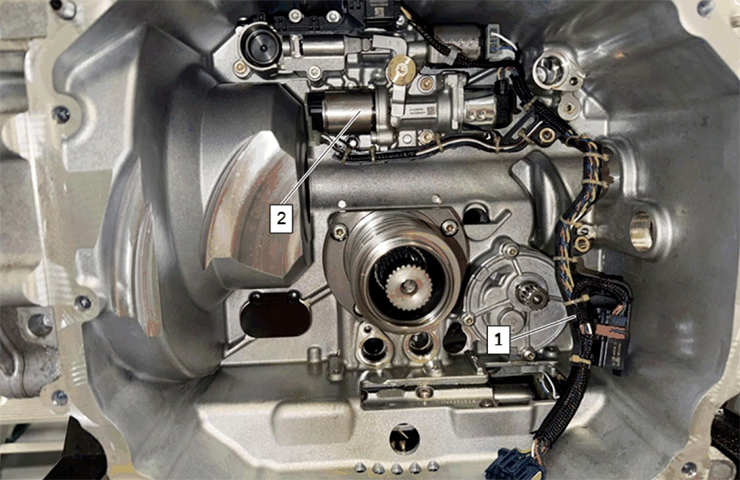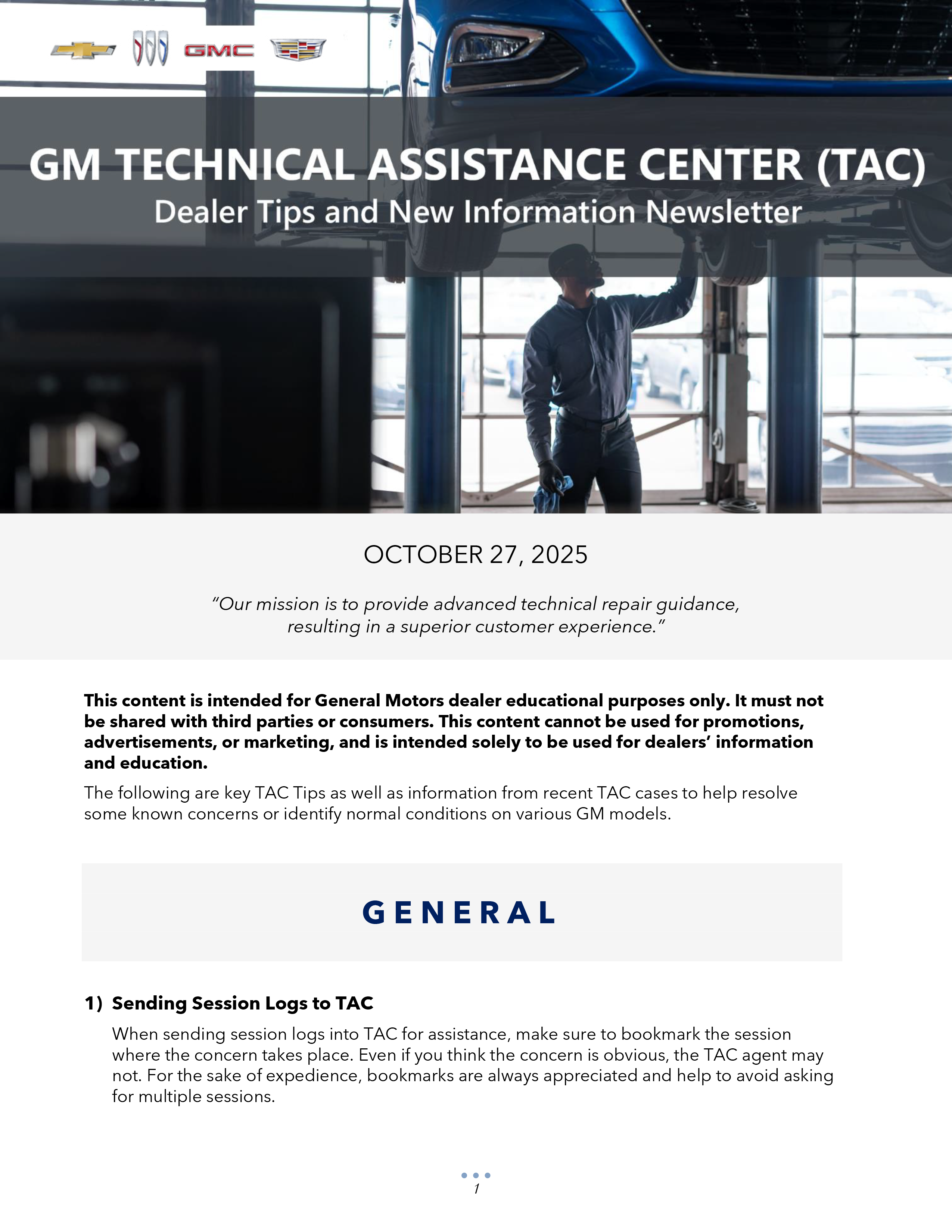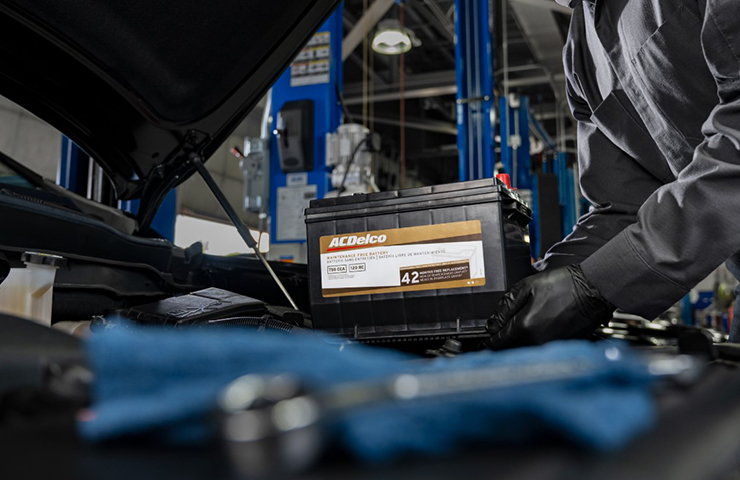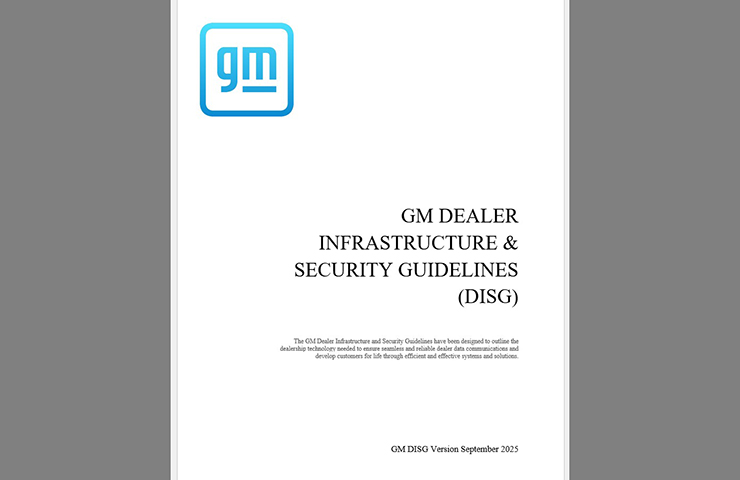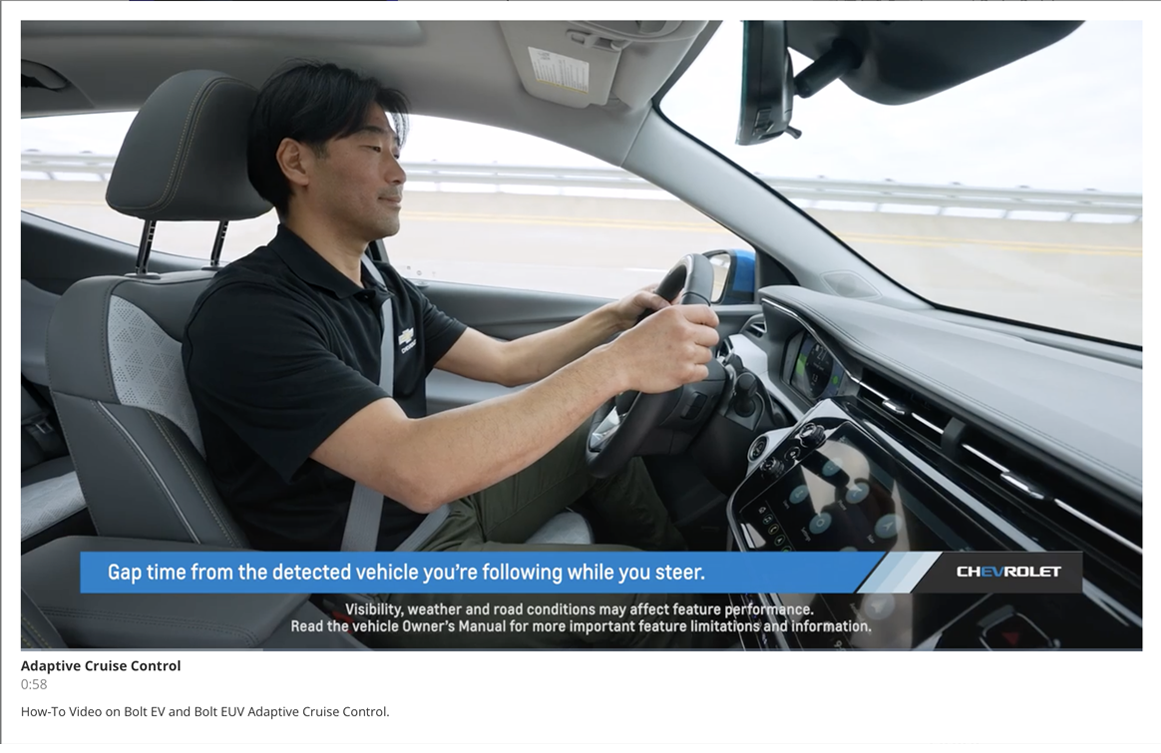Transport Mode, which puts the vehicle’s modules in a low power mode, reduces the electrical parasitic load on the 12V battery on traditional internal combustion engine vehicles as well as electric vehicles (EV). It increases 12V battery stand time during transit and should be used while the vehicle is in dealership inventory.
When Transport Mode is enabled, indicated by the flashing red battery warning light on the instrument cluster (Fig. 25, #2), it can potentially extend 12V battery stand time up to 70 days. A message also will display on the Driver Information Center when Transport Mode is enabled. (Fig. 25, #1)
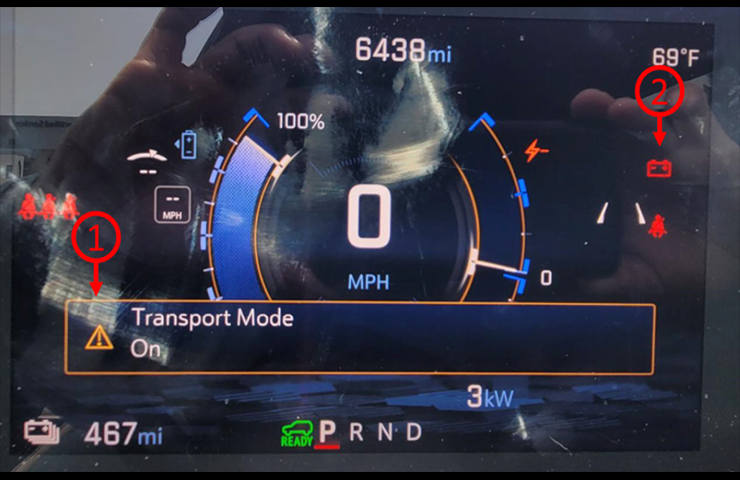
Fig. 25
Some of the modules that have reduced power while in Transport Mode are the Body Control Module (BCM), Radio, Front Camera Module, Running Boards, OnStar, HVAC and others. As a result, some of the vehicle features disabled in Transport Mode include climate controls and radio operation when the ignition is off, passive and remote keyless entry, perimeter lighting, automatic running board operation, liftgate or tailgate operation and active safety features. There also may be a limit on charging above 30% (program specific value).
Transport Mode has the largest impact on the BCM as it shortens Retained Accessory Power (RAP) operation down to 1 minute and disables approach detection, lighting features and some comfort features, such as heated seats.
Transport Mode can be enabled or disabled using the scan tool or manually on the vehicle, including through the Vehicle Settings menu on the infotainment screen. (Fig. 26) All vehicles shipped from the assembly plant with Transport Mode on should have the feature turned off as part of the normal Pre-Delivery Inspection (PDI) process. Transport Mode should be left on while the vehicle is in dealership inventory.
TIP: Always refer to the appropriate Service Information for the proper Transport Mode procedures as the procedures on some models may vary.

Fig. 26
Turning Transport Mode On/Off Using the Ignition/Power Button
To enable/disable Transport Mode on traditional internal combustion engine vehicles and EVs with a Power on/off switch (ignition mode switch)
- Start the vehicle.
- Press the brake pedal.
- Activate the hazard flashers.
- Press and hold the ignition mode switch for more than 15 seconds.
The Transport Mode On message will display on the DIC, if equipped, and the battery warning light will flash. (Fig. 27) Repeat these steps to turn off Transport Mode.

Fig. 27
Turning Transport Mode On/Off Using the Scan Tool
Some EVs with Passive Power Mode may not have an ignition switch. To enable/disable Transport Mode on EVs with Passive Power Mode, including Blazer EV and Silverado EV WT:
- Connect the scan tool to the vehicle.
- Launch Techline Connect and open GDS2.
- Follow the GDS2 path: Module Diagnostics > Body Control Module > Power Mode > Transport Mode.
- Select the appropriate button at the bottom of the screen – “Disable” to turn off Transport Mode (Fig. 28, #1) or “Enable” to turn on Transport Mode. (Fig. 28, #2) The parameter value indicates the current mode. (Fig. 28, #3)

Fig. 28
The Transport Mode message will display on the DIC, if equipped, and the battery warning light will flash if enabled.
Turning Transport Mode On/Off Using the Vehicle Settings
For some EVs with Passive Power Mode, including Equinox EV, Silverado EV RST and Sierra EV, Transport Mode can be enabled/disabled through the Vehicle Settings on the infotainment screen:
- Place the vehicle in Propulsion Mode.
- On the infotainment screen, go to Settings > Vehicle > Transport Mode.
- Select On or Off to enable or disable Transport Mode. (Fig. 29) The Transport Mode selection will be applied on the next power cycle.

Fig. 29
The Transport Mode message (Fig. 30, #1) will display on the DIC, if equipped, and the battery warning light will flash if enabled. (Fig. 30, #2)

Fig. 30
For additional information on Transport Mode, refer to Bulletin #23-NA-064.
– Thanks to Kurtis Hoezee and Chris Semanisin


